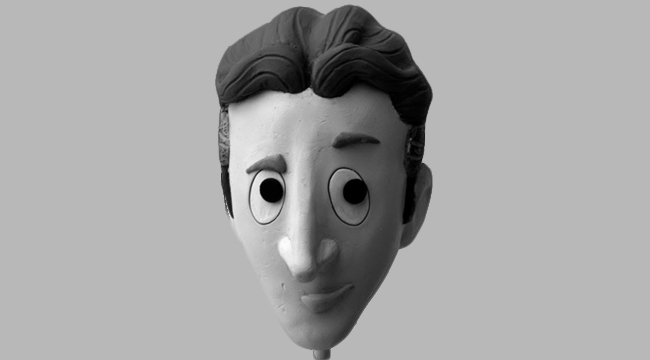An Oral History Of SNL’s ‘Christmastime For The Jews’
The Look And The Chaos


The pursuit of a specific sound carried over into the visuals and both the production and post-production process with a drive to perfect things and an uncommonly tight turnaround time necessitating a round-the-clock blitz that saw Brooks (and presumably others) sleeping in the studio.
Smigel: Because it was a Phil Spector thing, I thought, let’s make it from that era. It’s not only meant to be evocative of Rudolph, it goes even further back to these little things that were made in the ’50s that were claymation or stop-motion. One was called Suzy Snowflake and one was called Hardrock, Coco, and Joe. They were more famous in the Midwest than they were on the East Coast. They were also really before my time. I only discovered them when I lived in Chicago in the ’80s before I got SNL.
David Brooks (director): [Suzy Snowflake] was one of the big inspirations for the look of the characters. The celebrity sculpts [like Jon Stewart, whose model is above] ended up being a little bit more detailed but we kind had to just move so we set a really simple look for the majority of the characters and then worked consistent with it and with the short timeline.
Scharff: There was never enough time for big ideas like this.
Brooks: Traditionally, we’d spend some time designing the characters on paper and getting them approved by everybody. They’re kind of in love with it and say “yeah, let’s move forward.” Then we spend anywhere from a couple of weeks to a couple of months building the stop-motion puppets. It’s the same thing with the sets and the props. All that stuff gets designed on paper and we kinda just build it all ahead of time and then we go into production and we’re animating to a locked sort of boardamatic or animatic. And that’s cut to storyboards and then we spend however long it takes to shoot it and then move into post-production. With this, you can imagine that it was completely compressed.
Smigel: David Brooks was a great guy, by the way. He kept a positive attitude through the craziness.
Brooks: When Robert reached out initially, I think it was evident that this was gonna be something special so I think because of the pace of production, we probably were like, “let’s get this made,” but we were laughing while we were making it. We knew it was something great and probably didn’t fully acknowledge it until a couple of weeks later.
Scharff: We would edit on 54th and 10th and have to get them to 30 Rock. And for this, it was during the holidays. There are people everywhere and cars everywhere. David and Robert got into a taxi and they were running out of time to [to make it to dress rehearsal with the tape] so they had to get out of the taxi and run through the crowded streets with all the children around Rockefeller Center. Which is, by the way, something we would often have to do. It would usually be either Robert or me, in heels, running through the city and running to the eighth floor.
Smigel: That’s the closest I’ve come to dying. It’s really the only exercise I got.
Scharff: Because visuals were so complicated and it was animated to a scratch track it just was a lot of work. It was also stop motion so it just took a lot more time. I don’t think we cut anything out between dress and air. We may have added more graining onto the film. That was the other thing that took so much time. We were still mixing the song all the way up until air. We did a test mix, a temporary mix for dress rehearsal to run it. I was still at the studio mixing it and playing around with it to get it to the final version. Everything was down to the wire. It was insanity.
Smigel: Lorne actually emailed me a day or two after “Christmastime For The Jews” aired just wanting to tell me how much he loved it and how special it was. That was great.
